Editor’s note: Welcome to our monthly series, Driving the Greats. Your chaperone, David Lillywhite, Editor of acclaimed Magneto magazine, will be putting you in the driver’s seat of some of the most memorable cars of all time. Buckle up and enjoy. James Mills
It seems so small doesn’t it? So delicate, but not in a fragile way. The slim screen and door pillars, the sweep of the buttresses down into the coke bottle rear wings, the slope of the bonnet down to that low, narrow nose. The Dino 246GT looks special, the stylish Italian looking down on its less sophisticated rival, the 911.

I remember feeling oddly reluctant to drive one, years ago. Could it live up to the looks, the work of Pininfarina’s Aldo Brovarone? Would a V6 of just 2.4-litre capacity feel sufficiently Ferrari-like? I mean, even Enzo didn’t actually call it a Ferrari, when it was introduced to the world in 1967, preferring instead to brand it a ‘Dino’ as a nod to his beloved late son, who’d helped to develop Ferrari’s first V6 engine, with a little help from Fiat.
I’ve had two great drives in a Dino, one of a privately-owned example more than 20 years ago at the much-loved Chobham test track, in Chertsey, and one of Bell Sport & Classic’s just-restored ex-Frankfurt Motor Show car only a few months ago. I hate to give away the ending, but I loved them both.
The big surprise with a Dino is how solid a good one feels. Forget the shabby, scabby examples that were around a few years ago; I honestly don’t think there are many of those left now that Dino values have risen so high. The premium is still for a ‘chairs and flares’ spec car, with the widened wheelarches and the Daytona-style seats, but I prefer the slimmer body style of the non-flares car. Usually the flares are combined with wider Campagnolo wheels and tyres, which again I feel are unnecessary.
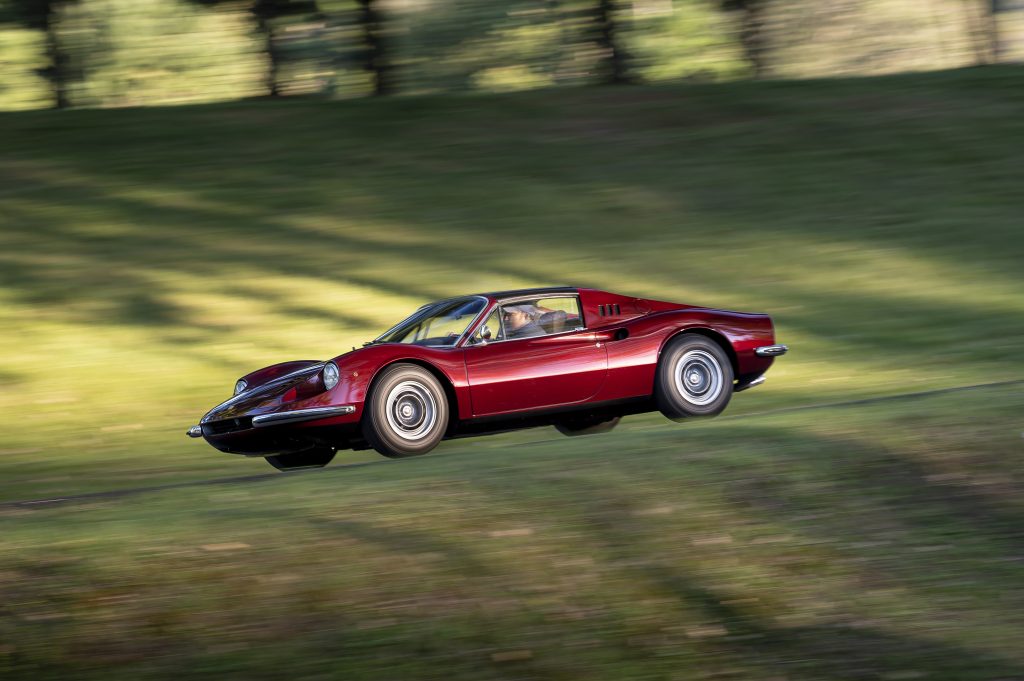
As for the seats, the Daytona versions are the most stylish. Mind you, the seats in the car I drove earlier this year, one of the first 246GTs, were resplendent with amazing orange towelling inners – and I’d take them any day over the Daytona-style ‘chairs’.
Anyway, whichever chairs are fitted, the experience is the same. You pull the neat little door handle, swing open the door and drop yourself down into the cabin. It’s easy, because the sill is slim and low. The cabin is small but there’s a feeling of airiness thanks to the simple dashboard, the large curved windscreen and the minimal intrusion of a tunnel down the centre – just like an early Beetle, 911 or 914. The footwells feel wide, though offset – and of course the driving position is long arms and short legs biased, which bugs me because I’m exactly the opposite.
The long accelerator is floor-hinged (like a VW or Porsche) but the clutch and brake pedals are pivoted from the bulkhead and have a surprisingly heavy feel that’s at odds with the tall spindly gearlever sprouting up though the evocative polished open gate and the slim wooden rim of the steering wheel.
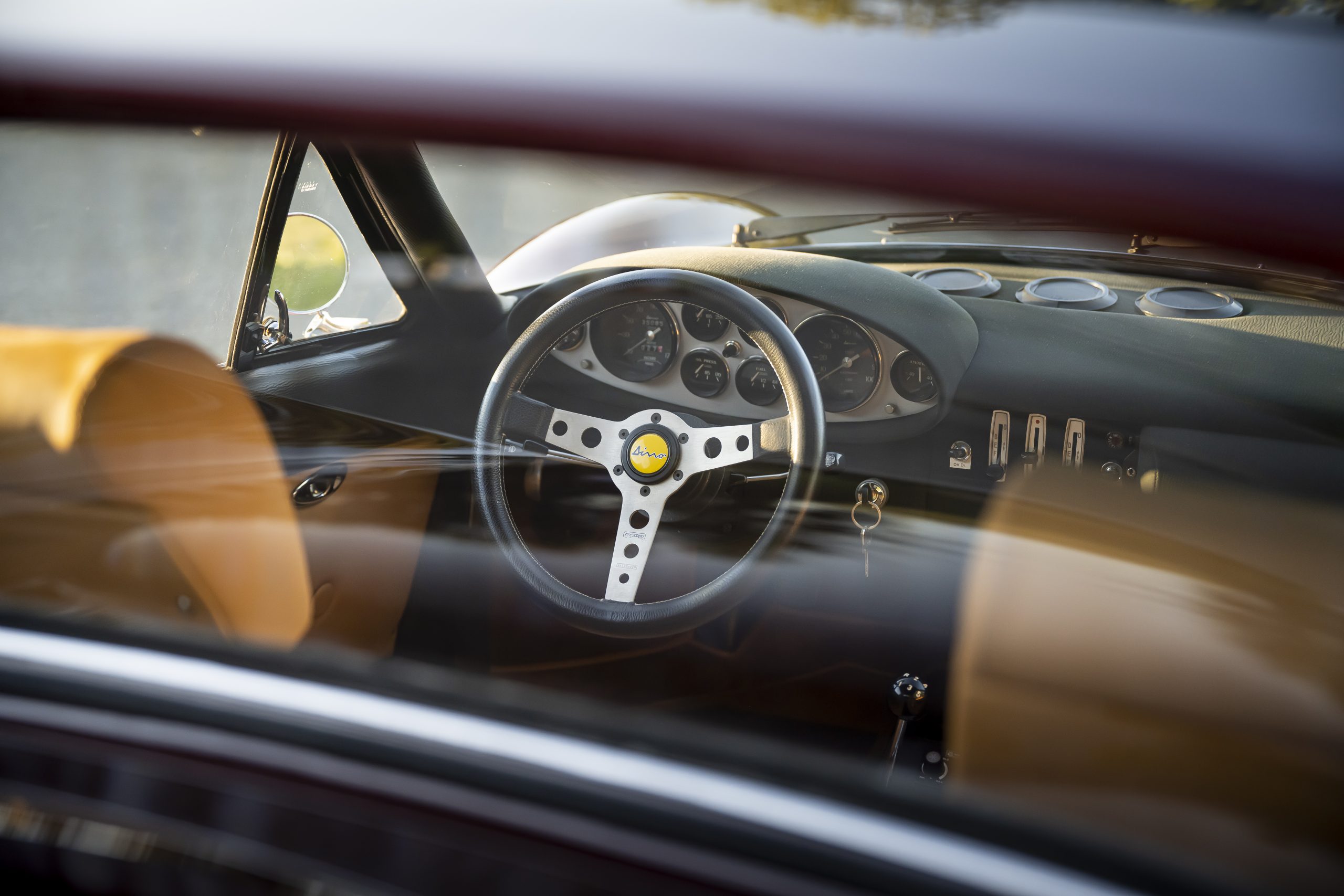
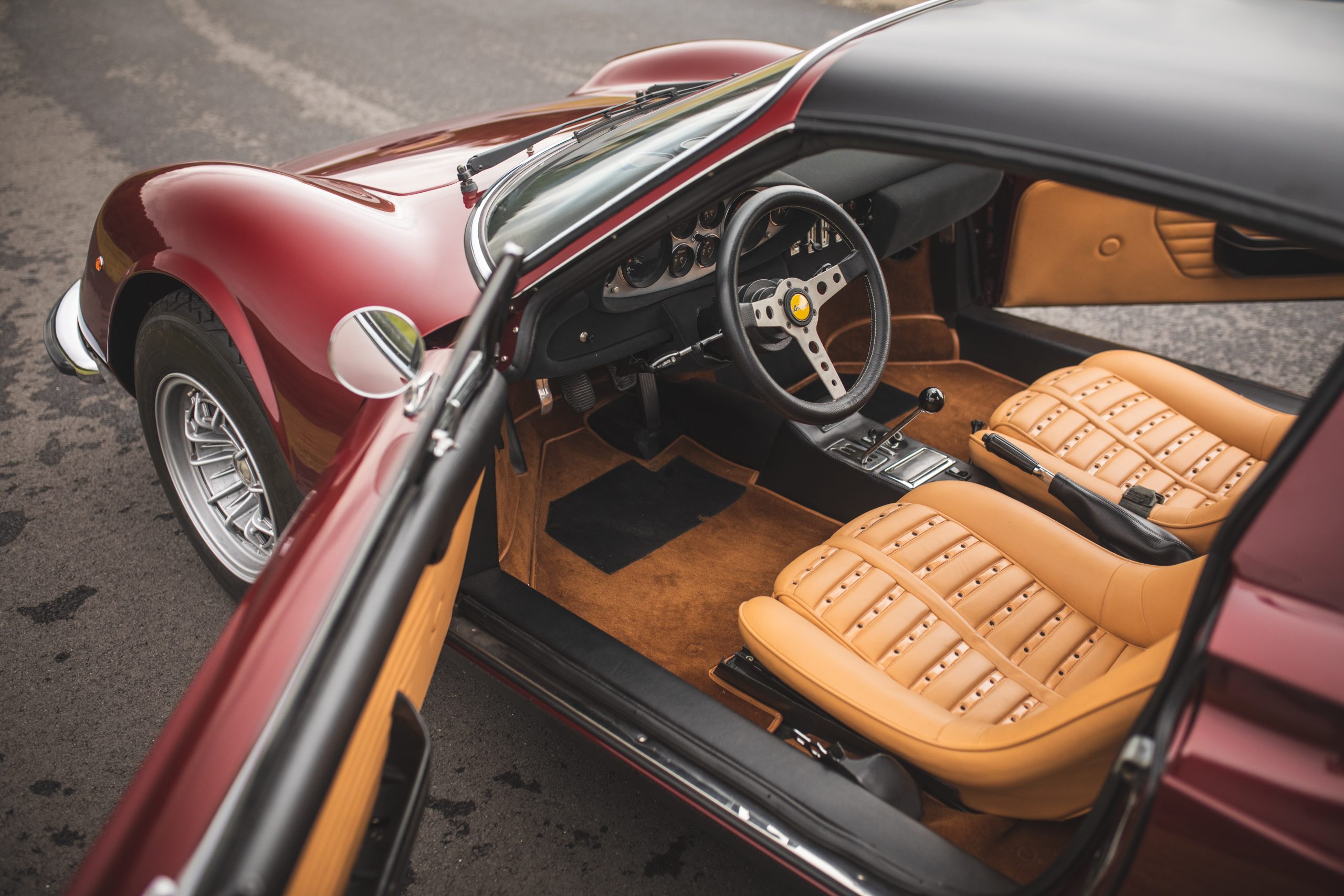
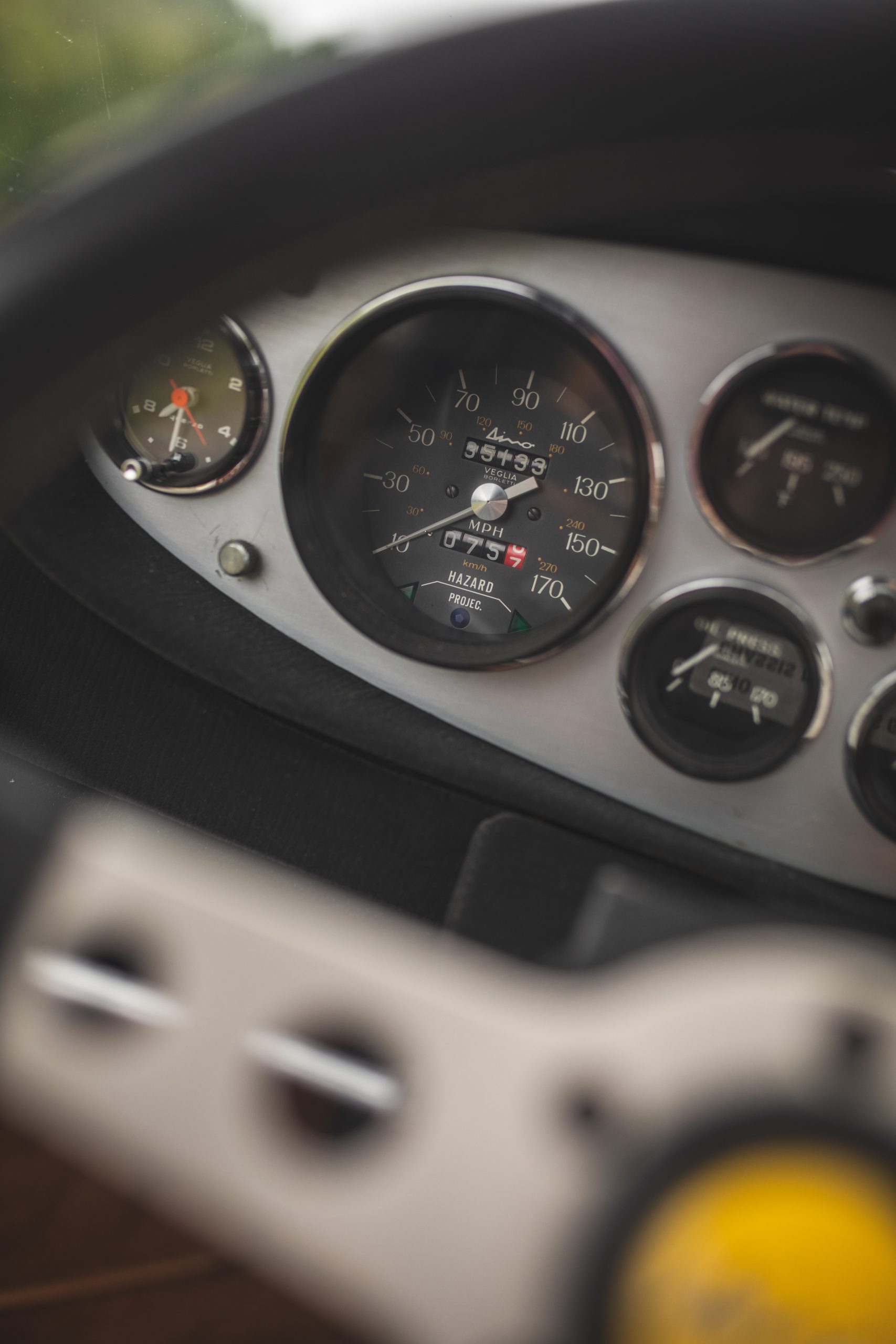
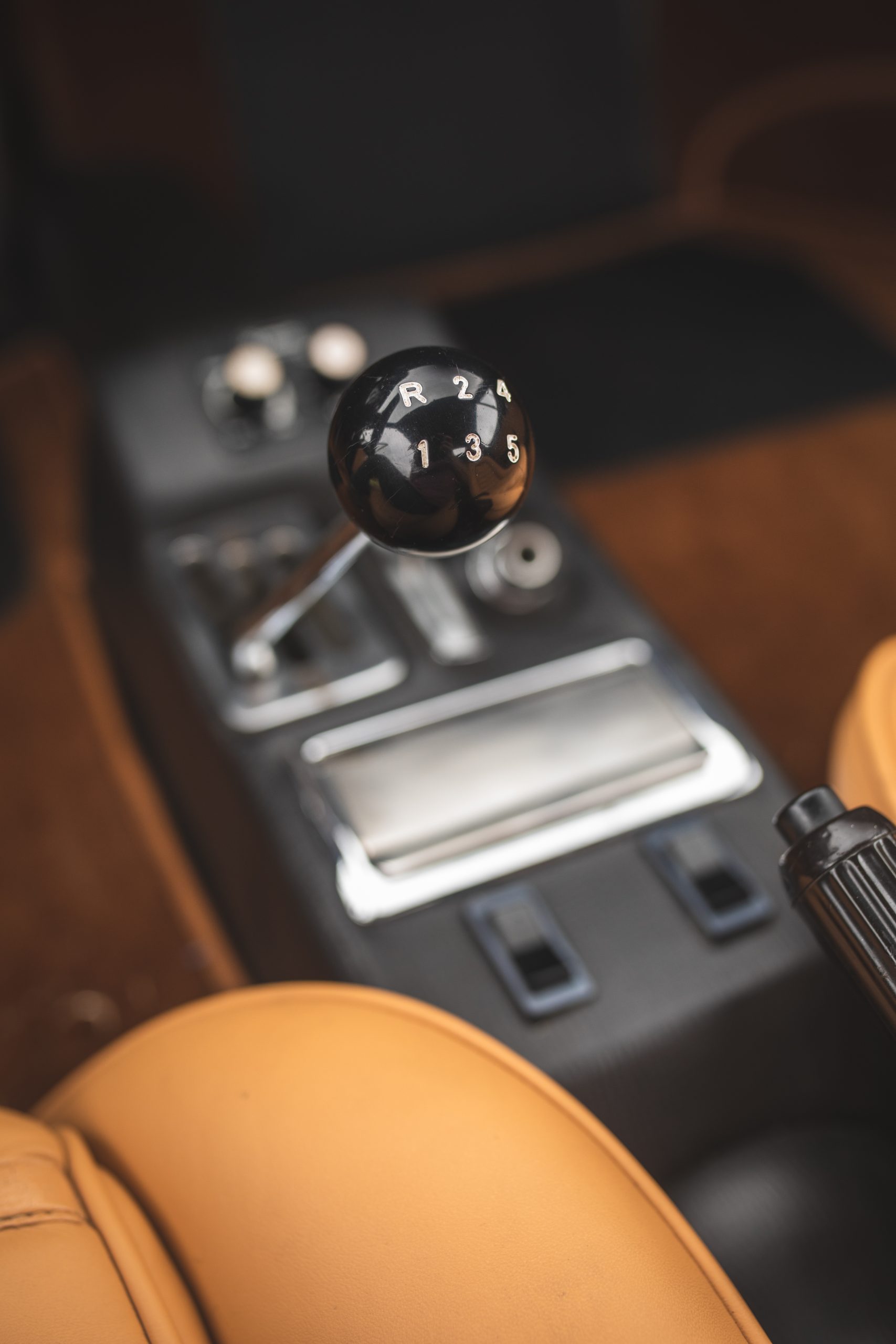
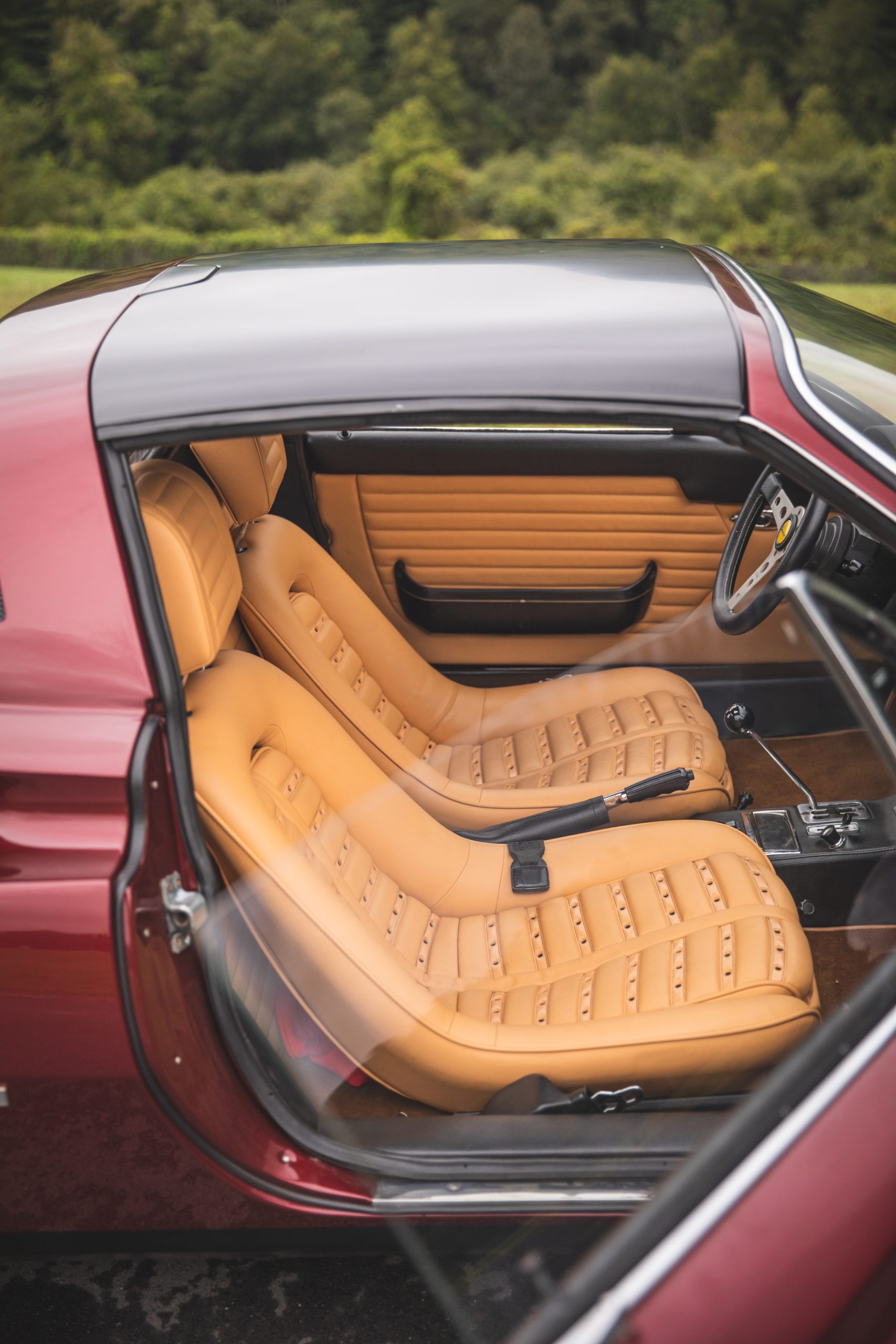
The Dino is mid-engined so the V6 is mounted right behind the cockpit. It’s fed by three downdraught Webers, which favour a couple of pumps on the accelerator pedal before a cold start on the neat little key on the dash, and then suck loudly through the intakes as the engine turns and fires. As the V6 warms up the idle hunts and the soundtrack is surprisingly whirring, once again more reminiscent of an air-cooled 911 than you’d expect.
First gear is on a dogleg, to the left and backwards, and it gives a little clack as it catches against the metal gate. The clutch are accelerator pedals are springy and the steering heavy at low speeds, so low speed manoeuvring takes a moment to adapt to. But the engine spins up willingly, whirring away behind you, as you push the lever forwards with a long movement into second gear, once again savouring the light sound of metal on metal as it moves through the gate.
First is so low that it’s much easier to change into second almost as soon as the Dino is rolling but then you can give it some gas, which is when the whirring is drowned out by intake roar and the bark of the exhausts, and this continues through the five gears as speed builds quickly. It’s no supercar, the Dino, it’s a sports car with lively but not throw-you-back-in-the-seat performance, but that feels okay, appropriate to the looks and the overall feel. In fact, it achieves 146mph and 0-60mph of 7 seconds, so it’s no slouch (and a bit quicker than a contemporary 911, which would have been around 5 per cent cheaper). A Dino cockpit is a happy place to be.
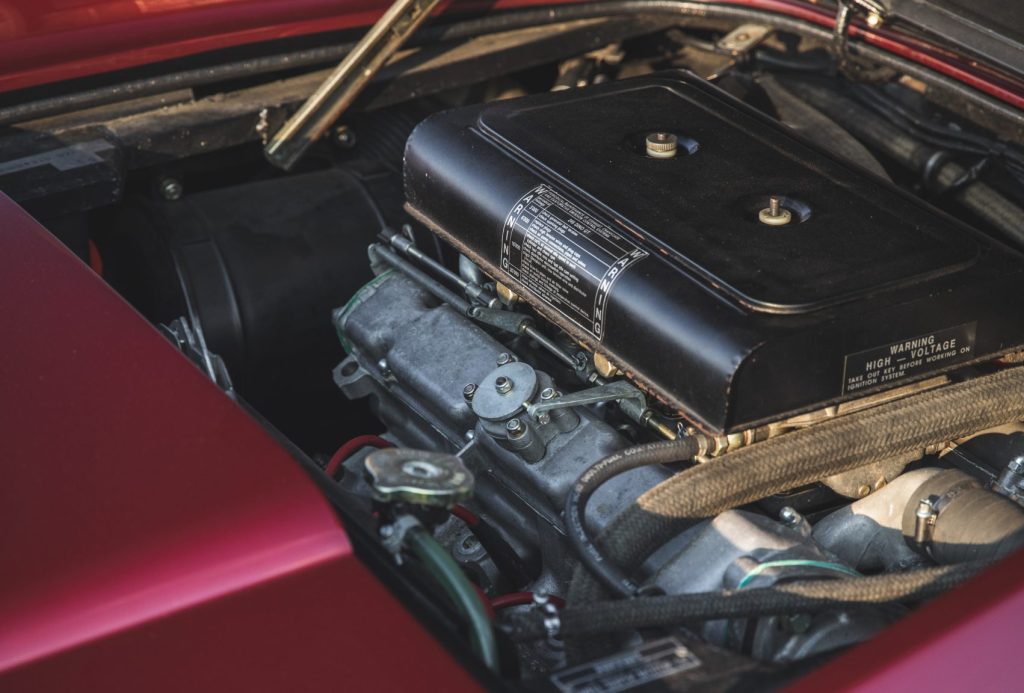
This is a wonderfully sweet engine, smoother than a typical V6 due to having a separate crank pin for each cylinder to allow an even firing order that a less thoroughbred V6 rarely archives. The angle between the cylinder banks is 65 degrees, again unusual because a V6 is usually 60 degrees, but it’s compact and the slightly wider angle allowed for straight inlet tracts for maximum efficiency. Prompted by Enzo’s son Alfredo, or Dino, Ferrari’s V6 was designed by the great engineer Vittorio Jano, who shared the finished design with Dino as he lay stricken by muscular dystrophy in his hospital.
It was developed for Formula 2, but its success came too late for Dino, who died in 1956 aged 24. The V6 went on to be adapted for the 1967 Dino 206 GT, which was succeeded in ’69 by the 246 GT L-series and the later, more common, M- and E-series. All look largely similar but the 206 GT had an all-alloy body on a steel chassis, while the 246 GT was a steel monocoque with a 60mm longer wheelbase and a mix of alloy and steel outdoor panels according to the model and, it seems, what was available on the day.
Anyway, we’re getting sidetracked, because the point is that this 192bhp (175bhp for the US) V6 is perfectly suited for the little Dino, lighter and more subtle than a V8, more special than a four-pot, even though a few Ferraris of the previous decade did make do with such a small number of cylinders. It’s smooth and, when the triple carbs are set up well, it pulls without complaint until it starts to emit a suitably Ferrari-like howl that somehow no other marque quite achieves.
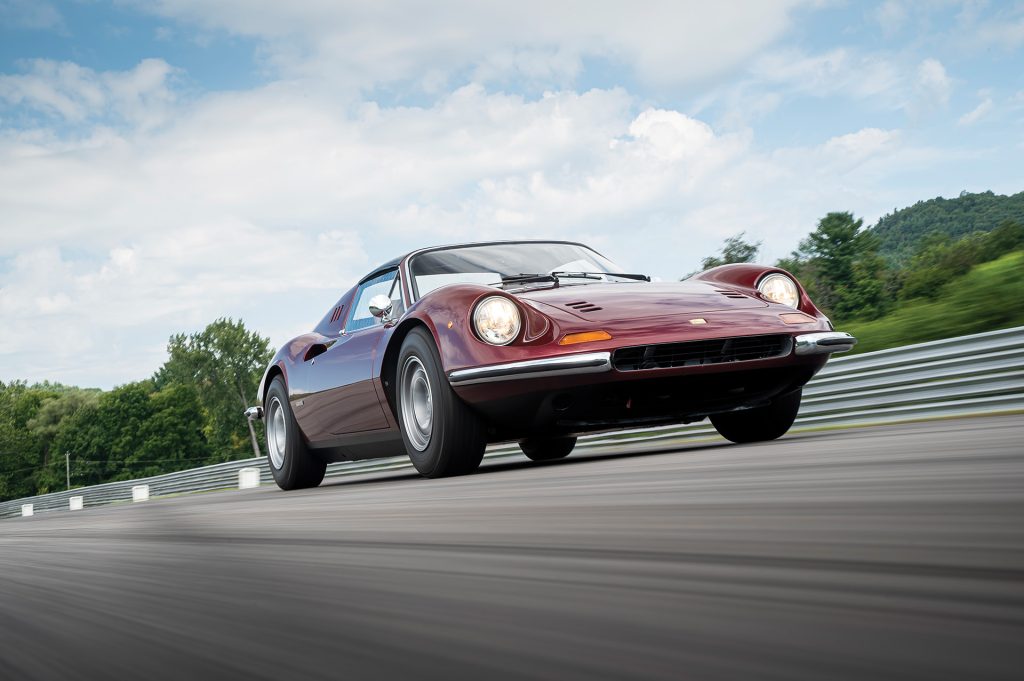
It handles, too. Above just a few miles per hour the rack and pinion steering lightens, as you’d expect from a mid-engined car that weighs just 1080kg (1100kg for the open-topped GTS), actually to the point that it feels vague at first, not helped by the movement of the tall tyre sidewalls. The secret, as with most mid- or rear-engined cars, is to loosen your grip on the steering wheel and let it feed back information about the road surface, allowing you to just nudge it into corners and appreciate the way it turns in so neatly.
The ride is supple, not stiff, and the strength of the monocoque and light weight help it to ride the bumps without complaint or kicks back through the steering. It feels fast, nimble and fun, not the blunt instrument of a front-engined V12 but a true super-sports car that’s easy to master.
Is is a true Ferrari? Yes… and no. It’s got the style and the verve of the marque, but it’s lighter and more lithe than many of its time, and to me that makes it more enjoyable in everyday driving than one of its more iconic, and expensive, big brothers. Though I can’t imagine Enzo would have been pleased to hear such an opinion, despite his son’s name on the badge.
Read more
Driving the Greats: The Lamborghini Countach is terrifying and thrilling all at once
The One That Got Away: Former racing driver Peter Sutcliffe’s Ferrari 250 GTO
Gold standard: As the Porsche 911 2.7 RS Sport and Touring turn 50, we drive them










I once drove a Dino at night, fast , in of all places Paraguay. I was obviously impressed with the handling of the car . However , what most surprised on the one I drove was its lack of any real enthusiasm while it popped and snarled until it got to about 6000 R.P.M when it started howling like a Ferrari should and virtually took off . A fantastic motor. A pity Ferrari doesn’t make something equivalent today . Memorable experience.